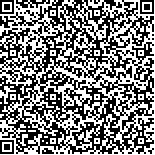下载中心
优秀审稿专家
优秀论文
相关链接
摘要

叶绿素荧光是光合作用的有效探针,可用于海洋浮游植物的监测与定量评估。太阳诱导叶绿素荧光覆盖可见光—近红外650—800 nm,在~685 nm与~740 nm表现出两个形态不同的荧光峰特征。基于~685 nm荧光峰的叶绿素浓度反演算法较为成熟,但在高悬浮物和高叶绿素浓度的水体中,算法的有效性不足。基于叶绿素荧光在氧气吸收谱段(O2-A)的填充作用,水体遥感反射率光谱~761 nm峰值中包含有太阳诱导叶绿素荧光信号,能用于水体叶绿素浓度的估算,但该反射峰形态特征还取决于传感器的光谱分辨率。本研究基于不同光谱分辨率的大气吸收谱线特征,模拟了水体遥感反射率光谱(750—775 nm)上太阳诱导叶绿素荧光的信号响应特征;分析了利用遥感反射率(~761 nm)计算叶绿素荧光的原理,阐明了不同光谱分辨率条件下水体叶绿素荧光信号在反射光谱上的形态变化规律。采用水面以上测量法获取的离水光谱辐亮度,包含了水面的菲涅尔反射信号,由于真实的菲涅尔系数难以准确测量,这给基于~761 nm处遥感反射率峰值的荧光信号估算带来不确定性影响。研究表明,假定菲涅尔系数为0时,虽然~761 nm叶绿素荧光信号与其浓度具有较好的线性统计关系,但却带来较大的不确定性;这种不确定的影响,在低浓度叶绿素水体中表现明显,在高浓度叶绿素水体中,影响相对较小;准确估算菲涅尔系数,有助于减少这种不确定性影响。对基于遥感反射率~761 nm叶绿素荧光信号的深入探讨,将能推动未来水体叶绿素荧光的识别与利用。
Sunlight-Induced Chlorophyll Fluorescence (SICF) is an important optical probe for the investigation of the status of marine phytoplankton and has often been used to estimate chlorophyll concentration in natural waters. SICF covers the visible and near-infrared spectral range (650-800 nm) and shows two dominant peaks at approximately 685 nm (a sharp peak) and approximately 740 nm (a broad shoulder). SICF at approximately 685 nm has been widely used in the in situ measurements or remotely sensed optical imageries for the estimation of chlorophyll concentration, but it can be disturbed by complex water backgrounds. In the downwelling solar irradiance spectrum (Ed), some of the narrow troughs in the spectral range of 700-800 nm are caused by the absorption of oxygen (O2-A) in the Earth's atmosphere. Upwelling water-leaving radiance includes the elastic backscattering signal (LwE) and SICF (Lf) from water. Therefore, a narrow reflectance peak at approximately 761 nm can be observed in the remote sensing reflectance (Rrs) of natural waters because of the fill-in effect on the oxygen absorption feature. Then, the fluorescence line height (FLH) at approximately 761 nm can be utilized to estimate the chlorophyll concentration of natural waters. FLH (~761 nm) is affected by the Fresnel reflection radiance of the water surface when the above mentioned water method is used to collect the spectra. The spectral forms are shaped by sensors with different spectral resolutions. In this study, the influence of the spectral resolution of sensors on the shape of the spectral curve at approximately 761 nm is modeled with MODTRAN 4.0 software, given the required parameters (e.g., remote sensing reflectance of natural water and upwelling SICF radiance). Then, different Fresnel coefficients are used in FLH (~761 nm) calculation to determine the effect of Fresnel reflection on the inversion of chlorophyll concentration through SICF at approximately 761 nm. Results show that the position of the main peak shifts toward a long wavelength, and the shape changes as the spectral resolution decreases. In the analysis of the effect of Fresnel reflection, the ratio of the root-mean-square error and the difference in FLH (ΔFLH=FLH(~761 nm)max-FLH(~761 nm)min) indicate that the appropriate Fresnel reflection coefficient can reduce the effect of the Fresnel reflection of the water surface on FLH (~761 nm). Nevertheless, the SICF in the near-infrared spectral region at approximately 761 nm needs to be further analyzed because it may provide different methods for the investigation of the photosynthesis of phytoplankton in natural waters.

